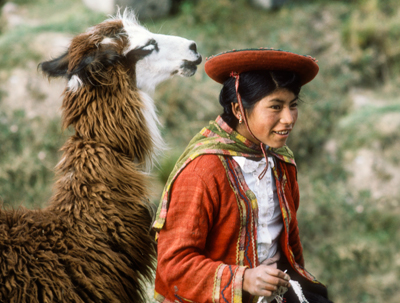It is said that great travel photographs are easy – just f/8 and be there! In reality of course, life is not that simple but there is significant underlying truth in the statement. While the f/8 is debatable, there is no doubt that you have to be there. Not only is it necessary to be physically present, but also to be engaged in a knowledgeable and active manner. You have to be in the right place at the right time, with the research done and sufficient information to be properly prepared. Only then can you hope to identify and capture the essential characteristics of a situation. Only then can you hope to take home a set of images that tells a simple but coherent story and includes the key elements of the assignment.
A good travel image is a neat slice of time that brings together in a sympathetic manner an interesting subject and composition, beautiful light, good colours, lines and tones, and a sense of moment. It pleases the eye and tells a story. The way in which all this is realized is of course subject dependent. Simplicity is important, and many images are ruined because the photographer’s vision was confused by multiple subjects and centres of interest. Trying to incorporate them all into one photograph merely dilutes the impact of each element to the point where the viewer is also confused. Where this is a problem, go closer and endeavour to pick out important characteristics or symbols, and portray them in a way that cannot be misunderstood. If you succeed with good composition and image design, and an appropriate subject, and you can also capture some passion, the message can be very powerful. The story should be understood by the viewer, and the image therefore becomes more informative and valuable.
There are many ways in which an image can reach beyond a direct representation of the subject. A frame of mind or a national character might, for example, be captured by photographing the drama of a Spanish bullfight, the exuberance of Brazilian carnaval, or the rural idyll of an English village cricket match. Each can be seen at a superficial level as entertainment or sport but, when considered more carefully, says a great deal about its country of origin.
 Only Spanish-speaking nations entertain by setting a man against a dangerous wild animal. The bullfight is not only a study of the arrogance, exhibitionism and courage of the matador, but also of the less theatrical but equally real machismo of the aficionados. Blood and death are buried deep in the Spanish soul, and the ritual of bullfighting is deeply embedded in the psyche. Freeze the action at the moment of truth, with the flamboyance of the suit of lights, the forward thrust of the matador’s hips, and the head held high with pride as blood is spilled on the sand, and you have captured much more than a sporting moment. You have exposed the character of a nation.
Only Spanish-speaking nations entertain by setting a man against a dangerous wild animal. The bullfight is not only a study of the arrogance, exhibitionism and courage of the matador, but also of the less theatrical but equally real machismo of the aficionados. Blood and death are buried deep in the Spanish soul, and the ritual of bullfighting is deeply embedded in the psyche. Freeze the action at the moment of truth, with the flamboyance of the suit of lights, the forward thrust of the matador’s hips, and the head held high with pride as blood is spilled on the sand, and you have captured much more than a sporting moment. You have exposed the character of a nation.
Among the wooded hills and bays of Rio, arguably South America’s most vibrant city, there emerges once a year an explosion of riotous colour and abandon unmatched anywhere in the world. To the residents of Rio it is carnaval, a phenomenon of much greater significance than the carefree festival of parades and spectacular costumes that an outsider may seek. Carnaval is a way of life, a state of mind as deeply rooted in society as the samba beat and the swing of bikini-clad hips on Copacabana beach. Above all it is liberty, freedom to be kings and queens, and to express the joys of life. This spirited attitude can be found throughout the city. Watch the beautiful people playing beach volleyball and listen to the cheers at the Marcana stadium. Capture this and you have Rio.
Cricket is a characteristically English game whose roots go back to the 13th century. The rules, which were not written until 1744, are complex and frequently not fully understood by enthusiastic fans who lie in the sunshine around the boundary and drink beer. A game, which may endure for days, is played by two teams of eleven players clad in pure white. It consists of a bowler delivering a ball towards one of two batsmen who each defend an upright wicket. Fielders from the opposing team attempt to catch the ball, once struck, before it hits the ground. A match progresses slowly and after a few hours may become the wallpaper for a pleasant social occasion. Played on a traditional English village green, perhaps against the backdrop of the local church and with the occasional whack of willow against leather, the materials of bat and ball, it is quintessentially English. It is the curiously complex sport of gentlemen, at once traditional, aggressive and politely restrained, but impeccably fair. A carefully crafted image can say a lot!






